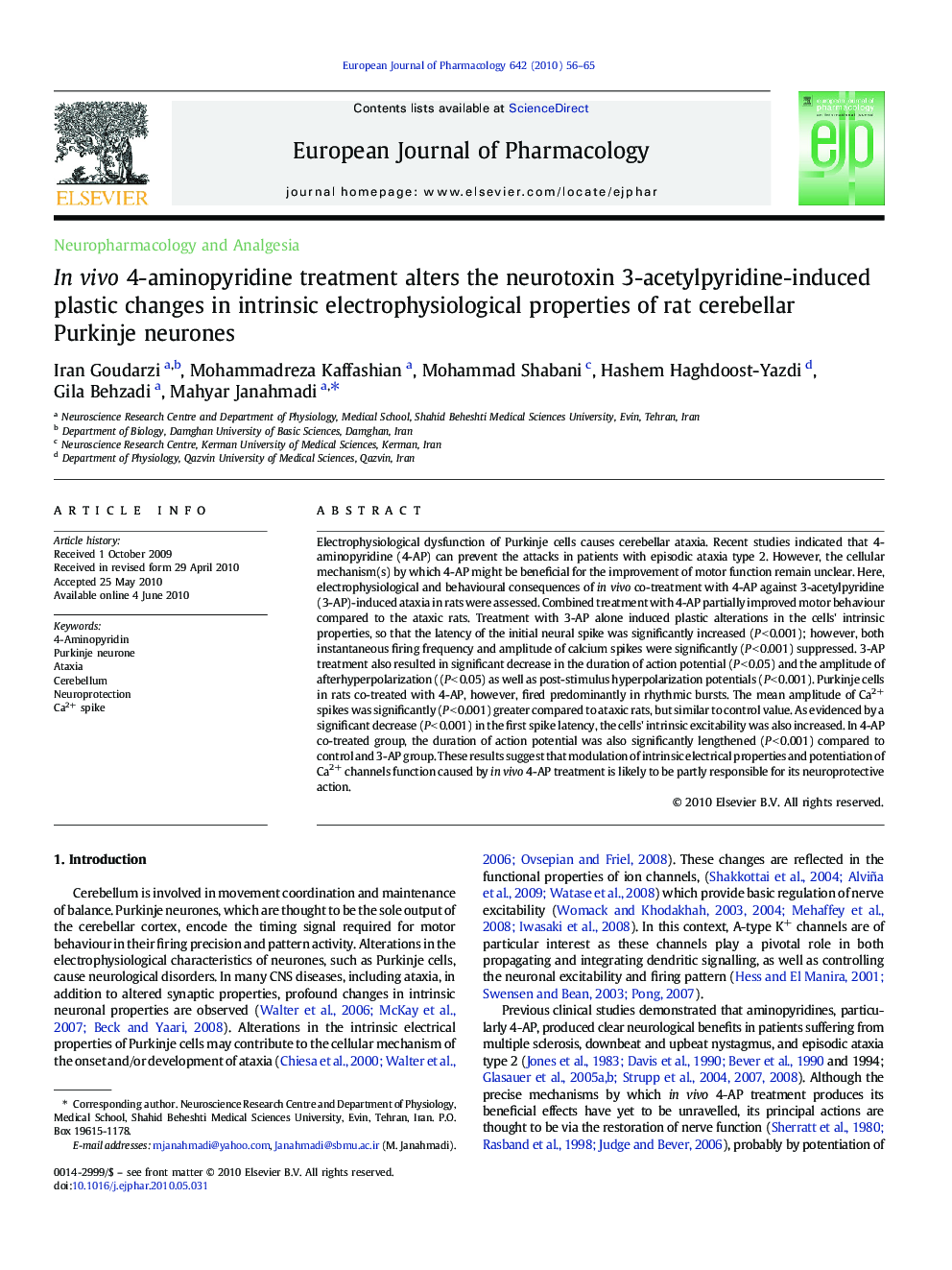| Article ID | Journal | Published Year | Pages | File Type |
|---|---|---|---|---|
| 2533288 | European Journal of Pharmacology | 2010 | 10 Pages |
Electrophysiological dysfunction of Purkinje cells causes cerebellar ataxia. Recent studies indicated that 4-aminopyridine (4-AP) can prevent the attacks in patients with episodic ataxia type 2. However, the cellular mechanism(s) by which 4-AP might be beneficial for the improvement of motor function remain unclear. Here, electrophysiological and behavioural consequences of in vivo co-treatment with 4-AP against 3-acetylpyridine (3-AP)-induced ataxia in rats were assessed. Combined treatment with 4-AP partially improved motor behaviour compared to the ataxic rats. Treatment with 3-AP alone induced plastic alterations in the cells' intrinsic properties, so that the latency of the initial neural spike was significantly increased (P < 0.001); however, both instantaneous firing frequency and amplitude of calcium spikes were significantly (P < 0.001) suppressed. 3-AP treatment also resulted in significant decrease in the duration of action potential (P < 0.05) and the amplitude of afterhyperpolarization ((P < 0.05) as well as post-stimulus hyperpolarization potentials (P < 0.001). Purkinje cells in rats co-treated with 4-AP, however, fired predominantly in rhythmic bursts. The mean amplitude of Ca2+ spikes was significantly (P < 0.001) greater compared to ataxic rats, but similar to control value. As evidenced by a significant decrease (P < 0.001) in the first spike latency, the cells' intrinsic excitability was also increased. In 4-AP co-treated group, the duration of action potential was also significantly lengthened (P < 0.001) compared to control and 3-AP group. These results suggest that modulation of intrinsic electrical properties and potentiation of Ca2+ channels function caused by in vivo 4-AP treatment is likely to be partly responsible for its neuroprotective action.
